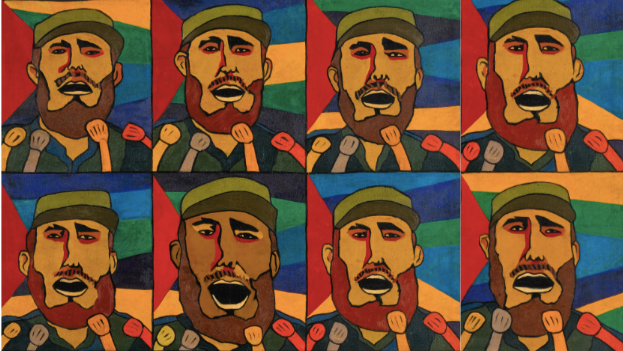
![]() 14ymedio, Xavier Carbonell, Havana, 26 February 2023 — History is the most deceptive and refined form of fiction. The talent of historians to disguise their prose, hide their voice and their focus, how discreet the selection process and editing of life, the skill with which they choose a leader, a time, a territory, converts their discipline into verbal acrobatics.
14ymedio, Xavier Carbonell, Havana, 26 February 2023 — History is the most deceptive and refined form of fiction. The talent of historians to disguise their prose, hide their voice and their focus, how discreet the selection process and editing of life, the skill with which they choose a leader, a time, a territory, converts their discipline into verbal acrobatics.
Luckily, citizens or readers have something in their favor: an absolute brotherhood of historians does not exist, there is no complete book compatible with all regions and policies. We cannot count on, to state it that way, one true universal history. That helps so that a simple comparison between a book in its own country and another abroad may reveal anachronisms, conspiracies and splinters.
There are some familiar examples. What is known in Cuba as the War of ’95 or — as the martiana* propaganda called it — Necessary, in Spain is referred to as the War of ’98. While 1895 marked the end of containment for us, three years later the Spaniards would see their fleet bombed, the nation in a depression and the old empire defeated. For Cuba, ’95 brings independence; for Spain,’ 98 was Baroja and Unamuno**, crisis, meditation and a rebirth.
Since 1762, islanders spoke of the takeover of Havana by the British, as if they were not conquerers, but tourists, who had entered the city. The British, who referred to the Spanish War of Independence using the gentle name of Peninsular War, correctly define it as a seige or invasion.
But, there is no need to go so far back. No era has been more battered by official historians than the last 120 years. The Republic born in 1902, after decades of tension and bloodshed, Castro dismissed as a Pseudo-republic, a Mediated Republic or Neo-colony. That is how we learned it, wasting words, and that is still repeated — with little innocence — by our grandparents, often loyal to the caudillo, forgetting Eliseo Diego’s bittersweet poem: “It has to do with how my father used to say it: the Republic. . .with his chest puffed, as if referring to the soft, ample, sacred woman who gave him children.”
Contrasting one book with another it is not only fruitful to consider the space where it was written, but also the time. It is sufficient to compare the first histories of Cuba–those of Bishop Morel and José Martín Félix de Arrate — with the manual of Soviet echos used by university students. Clearly, I’m not referring to the evident differences in style, the methods or the rigor of the research. I am referring to the master which the books serve — all books have an owner — who is interested in viewing life a certain way, who wants to reassure or to destroy.
The misrepresentation of national history that Castro made was so grotesque, and the historians so submissive, that very early on, it provoked the mockery of Manuel Moreno Fraginals in History As a Weapon. “Students,” he worte in 1966, “are perplexed by the works that pretend to be the immediate antecedents to the present we are living and that nonetheless have nothing to do with it.” The new past Castro offered was an epic series of nonsense that, I imagine, the old republican authors such as Roid and Ortiz would not be able to read without blushing.
Moreno Fraginals, lucid and misunderstood, author of the best book ever written on the history of Cuba, died in Miami in 2001. Fidel Castro, for his part, was rewarded for his delirium with the 2008 National History Award. His brother, Raúl received it in 2021.
We’ve always been at the mercy of words. Playa Girón, booming and triumphant or Bay of Pigs, geographic? October Crisis or Missile Crisis? Separatism, reformism, or anexationism? Blockade or embargo? Socialism, communism or capitalism? Protests or disruptions? Emigration or exile? The confusion, which spans from the private to the judicial, is contagious.
The drafters of the Constitution of 2019 ignored that it is an error to refer to La bayamesa*** as the Hymn of Bayamo. When it was printed, disregarding the warning, several writers proposed that — to be true to the sudden fervor of referring to all symbols by their place of origin — they should refer to the Seal and Flag of New York, the city where Miguel Teurbe Tolón designed them in 1849.
But if dictators know how to calibrate history and reorganize words, nothing compares to the way in which the domestic narrative is concocted and, even more shameless, the personal narrative. At the end of the day, we are the stories we tell about ourselves, the versions that become nuanced or disolve, a fiction continually touching up what we said, did, or thought. We were the first to use history as a weapon — more like a pocket knife or dagger.
Translated by: Silvia Suárez
Translator’s notes:
*”Martiana” refers to José Martí
**Baroja and Unamuno were two Spanish authors of the late 1800s.
***La bayamesa is the Cuban national anthem.
____________
COLLABORATE WITH OUR WORK: The 14ymedio team is committed to practicing serious journalism that reflects Cuba’s reality in all its depth. Thank you for joining us on this long journey. We invite you to continue supporting us by becoming a member of 14ymedio now. Together we can continue transforming journalism in Cuba.
